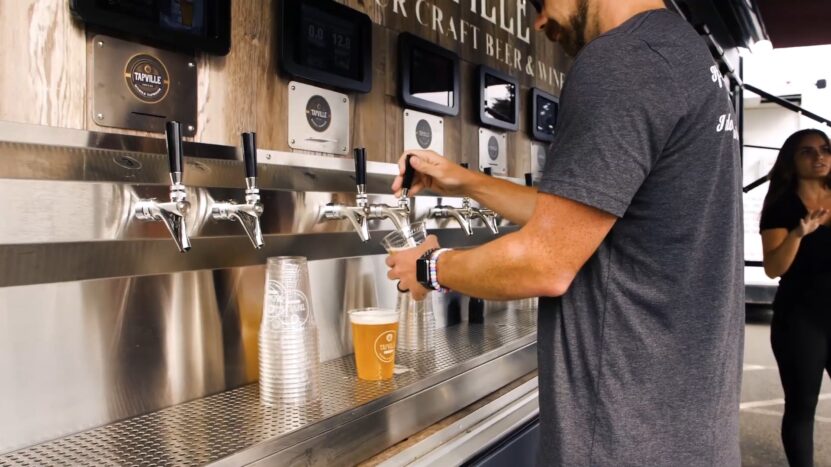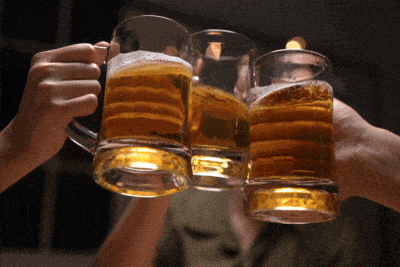Craft beer has experienced a remarkable resurgence in recent years, with enthusiasts seeking out unique and flavorful brews that go beyond the mass-produced offerings of major breweries. Alongside this resurgence, the concept of the taproom has emerged as a key player in the craft beer industry.
They have become vibrant spaces where beer enthusiasts can gather, socialize, and indulge in a wide array of finely crafted beers.
In this blog post, we will explore the fascinating world of taprooms, uncovering their historical significance, their purpose and function within the craft beer industry, and the unique experiences they offer to beer lovers.
Definition of a Taproom

A taproom, in its simplest form, is an establishment connected to a brewery where customers can enjoy the brewery’s beers directly from the source. Unlike traditional bars or pubs, taprooms prioritize the distribution and consumption of the brewery’s own products.
These dedicated spaces provide a unique opportunity for enthusiasts to immerse themselves in the brewery’s culture, craftsmanship, and creativity.
Growing Popularity and Significance of These Institutions in the Craft Beer Industry
Over the past decade, they have experienced a meteoric rise in popularity. This can be attributed to several factors, including the increasing demand for craft beer, the desire for authentic and locally made products, and the rise of the experiential economy.
Taprooms have become essential for craft breweries to establish a direct connection with their customers and to differentiate themselves in an increasingly competitive market.
Historical Background

Taprooms have a rich historical background that can be traced back to the origins of the product itself. In ancient civilizations such as Mesopotamia and Egypt, it was often brewed and served within households.
As beer production became more organized, taverns and alehouses emerged as gathering places for communities to socialize and enjoy locally brewed beers. This historical significance in its culture highlights the enduring appeal of taprooms as places to celebrate and appreciate the art of brewing.
Purpose and Function
These establishments serve as an extension of breweries, acting as physical representations of their craft and brand identity. By offering a direct-to-consumer experience, breweries can control the quality and presentation of their beers, ensuring that customers have the best possible tasting experience.
Taprooms also serve as laboratories for experimentation, allowing breweries to test new flavors, styles, and brewing techniques in a controlled environment before scaling up production.
Ambiance and Atmosphere

The ambiance and atmosphere of a taproom play a crucial role in shaping the overall experience for visitors. They are typically designed to be welcoming and social spaces, with comfortable seating areas, communal tables, and open layouts that encourage interaction between patrons.
The decor often reflects the brewery’s personality, featuring elements such as rustic woodwork, exposed brewing equipment, and beer-related artwork. The goal is to create an environment where customers can relax, engage in conversation, and fully immerse themselves in the world of craft ale.
Beer Selection

One of the most enticing aspects of these locals is the wide variety of beers available. Beyond the core offerings, taprooms often feature rotating taps that showcase seasonal brews, limited editions, and experimental creations.
This diverse selection allows the enthusiasts to explore new flavors and styles, and to develop a deeper appreciation for the craft of brewing. Additionally, they frequently offer flights or tasting flights, allowing customers to sample multiple beers in smaller portions and compare their unique characteristics.
Brewery Showcasing
Taprooms provide an ideal platform for breweries to showcase their products and build brand loyalty. By offering exclusive releases and taproom-only brews, breweries create a sense of excitement and anticipation among their customers.
They also allow breweries to receive immediate feedback on new beers, enabling them to refine recipes and make adjustments based on customer preferences. This direct interaction between brewers and consumers fosters a sense of community and fosters a deeper appreciation for the brewing process.
Community Engagement
Taprooms often serve as gathering places for the enthusiasts and the wider community. They frequently host events such as beer tastings, brewery tours, and collaborations with local businesses. These events not only attract customers but also promote a sense of camaraderie among the lovers of this beverage.
These locals can become integral parts of their neighborhoods, supporting local agriculture by sourcing ingredients locally and partnering with nearby food producers. They also create job opportunities, further contributing to the economic vitality of their communities.
Tasting Experiences
One of the unique advantages of taprooms is the opportunity to taste the product directly from the source. This allows customers to experience the freshness and nuances of the beer that may be lost during distribution and storage.
Taprooms often provide educational opportunities, such as guided tastings or brewer-led tours, where visitors can learn about different beer styles, the brewing process, and the specific characteristics of each product they sample. This enhances the overall enjoyment of the beer and deepens the connection between the consumer and the brewery.
Food Offerings
While taprooms primarily focus on beer, many also offer food options to complement the beer-drinking experience. These can range from simple snacks and artisanal charcuterie boards to full-service kitchens that provide carefully curated menus designed to pair harmoniously with the brewery’s beers.
Food offerings in taprooms aim to enhance the flavors of the drink and provide sustenance for customers during their visits. The pairing of beer with food can create a unique sensory experience, as different flavors and textures interact and complement each other.
Taproom Etiquette

When visiting an institution of this kind, it’s essential to observe proper etiquette to ensure a positive experience for all. It is customary to respect the staff and fellow patrons by following guidelines, such as not overcrowding the bar, being patient during busy times, and tipping generously.
It’s also important to show appreciation for the brewing process by treating the beverage with care, avoiding excessive consumption, and engaging in responsible drinking practices. By adhering to taproom etiquette, visitors contribute to a pleasant atmosphere and help maintain the integrity of the craft beer community.
The Economic Impact
Taprooms play a significant role in the economic development of local communities. They often become hubs for job creation, employing staff members for brewing, serving, kitchen operations, and event coordination.
Additionally, taprooms support local agriculture by sourcing ingredients from nearby farmers and suppliers, strengthening the local food and beverage ecosystem. The increased foot traffic generated by taprooms can also benefit neighboring businesses, such as restaurants, hotels, and retail establishments, further contributing to the economic vitality of the area.
Conclusion
Taprooms are much more than just places to drink beer; they are vibrant spaces that celebrate the artistry, community, and culture of craft brewing. They provide beer enthusiasts with a unique opportunity to experience the craftsmanship of their favorite breweries firsthand, while fostering a sense of camaraderie among like-minded individuals.
Whether you’re a seasoned craft beer enthusiast or a curious newcomer, visiting a taproom is an experience that should not be missed.
So, go out and explore the world of taprooms, savoring the flavors, forging new connections, and immersing yourself in the fascinating world of craft beer. Cheers!

